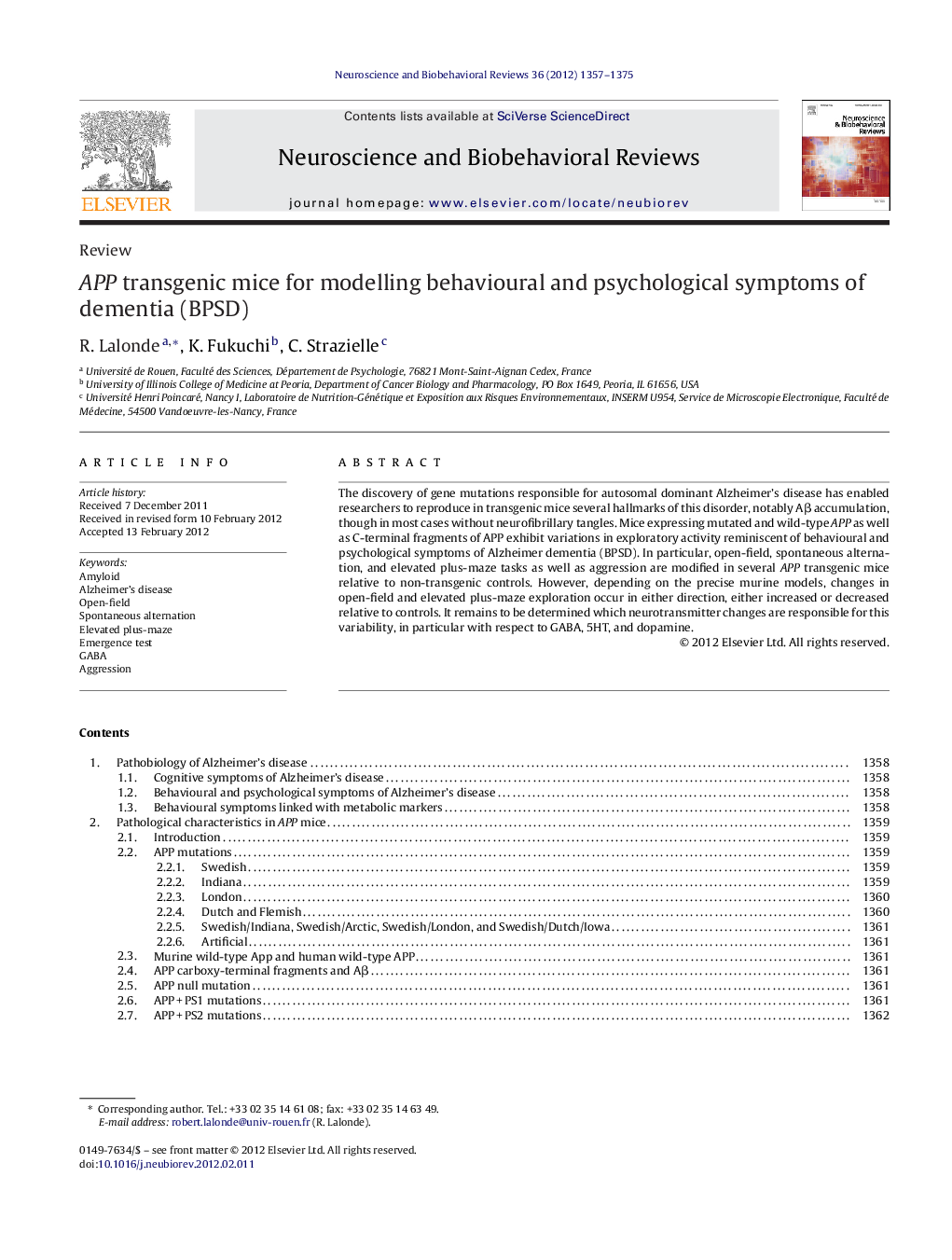| Article ID | Journal | Published Year | Pages | File Type |
|---|---|---|---|---|
| 937516 | Neuroscience & Biobehavioral Reviews | 2012 | 19 Pages |
The discovery of gene mutations responsible for autosomal dominant Alzheimer's disease has enabled researchers to reproduce in transgenic mice several hallmarks of this disorder, notably Aβ accumulation, though in most cases without neurofibrillary tangles. Mice expressing mutated and wild-type APP as well as C-terminal fragments of APP exhibit variations in exploratory activity reminiscent of behavioural and psychological symptoms of Alzheimer dementia (BPSD). In particular, open-field, spontaneous alternation, and elevated plus-maze tasks as well as aggression are modified in several APP transgenic mice relative to non-transgenic controls. However, depending on the precise murine models, changes in open-field and elevated plus-maze exploration occur in either direction, either increased or decreased relative to controls. It remains to be determined which neurotransmitter changes are responsible for this variability, in particular with respect to GABA, 5HT, and dopamine.
► APP mutants display BPSD. ► APP mutants are impaired in spontaneous alternation. ► APP mutants display hyperactivity or hypoactivity. ► APP mutants display hyperanxiety or hypoanxiety. ► APP mutants show increased aggression.
